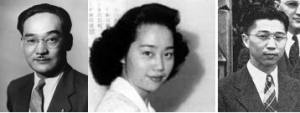 In California, January 30 is Fred Korematsu Day to remember the landmark 1944 Koreamatsu v. United States case in which the Supreme Court ruled that the incarceration of Japanese Americans solely because of their race/ethnicity was not necessarily unconstitutional.
In California, January 30 is Fred Korematsu Day to remember the landmark 1944 Koreamatsu v. United States case in which the Supreme Court ruled that the incarceration of Japanese Americans solely because of their race/ethnicity was not necessarily unconstitutional.
Writing for the majority, Justice Hugo Black held that although “all legal restrictions which curtail the civil rights of a single racial group are immediately suspect” and subject to tests of “the most rigid scrutiny,” not all such restrictions are inherently unconstitutional. “Pressing public necessity,” he wrote, “may sometimes justify the existence of such restrictions; racial antagonism never can.”
Ultimately, the Korematsu decision was over turned and with it came the recognition that great injustices had been done to Americans of Japanese descent. Many people who are not familiar with Japanese American history have the misconception that all Japanese Americans went willingly and quietly to the concentration camps. However, Korematsu is a good example of someone who wasn’t willing to leave their homes without a fight. However, there were other court cases that dealt with the incarceration of Japanese American that I believe deserve equal recognition.
Here are the top three Supreme Court cases dealing with the incarceration of Japanese Americans during World War II:
Yasui v. United States (1943)
Yasui wanted to test the constitutionality of the curfew laws against Japanese Americans after President Roosevelt signed Executive Order 9066. Yasui intentionally got himself arrested. His case eventually made it all the way to the Supreme Court, where they ruled that curfews against specific citizens was constitutional. Later, another court ruled that the curfew was illegal but that Yasui had given up his citizenship when he worked for the Japanese consulate.
Hirabayashi v. United States (1943)
The Supreme Court ruled (on the same day Yasui v. United States was decided) that curfews against minority groups were constitutional if the country was at war with the country from which that minority group had originally come from.
After Executive Order 9066, Endo was forcibly removed from her home in Sacramento and sent to Tule Lake (Northern California), one of the 10 concentration camps run by the United States government during World War II. She filled a writ of habeas corpus, asking the government to charge her with a crime or release her. The government tried to compromise by offering to release her outside of the West Coast, but she refused. The case eventually reached the Supreme Court where they ruled that detaining people because of their race was unconstitutional. After the ruling, the exclusion order was were suspended.
It should be noted that both the Hirabayashi and the Yasui cases were later overturned in the 1980s.







